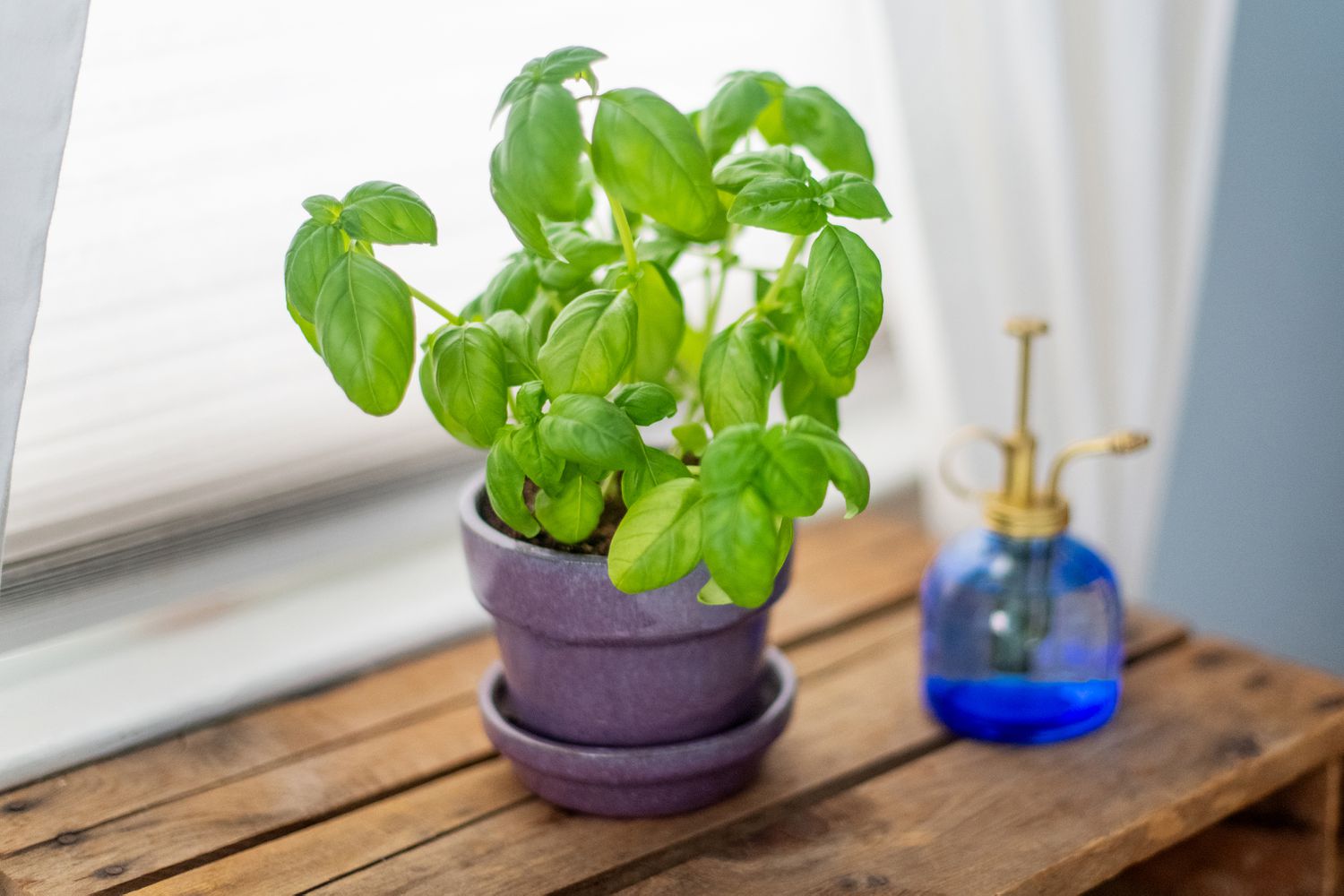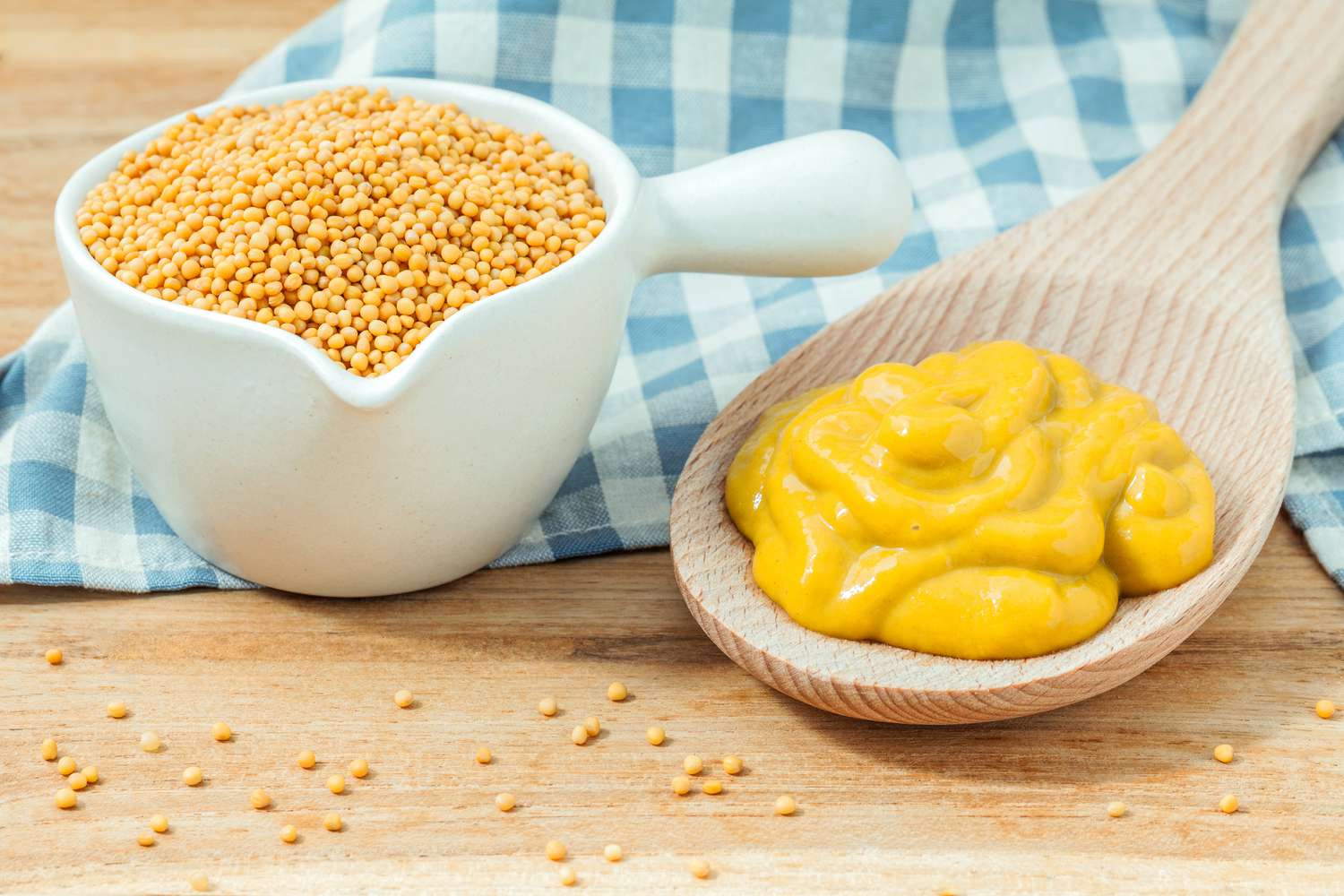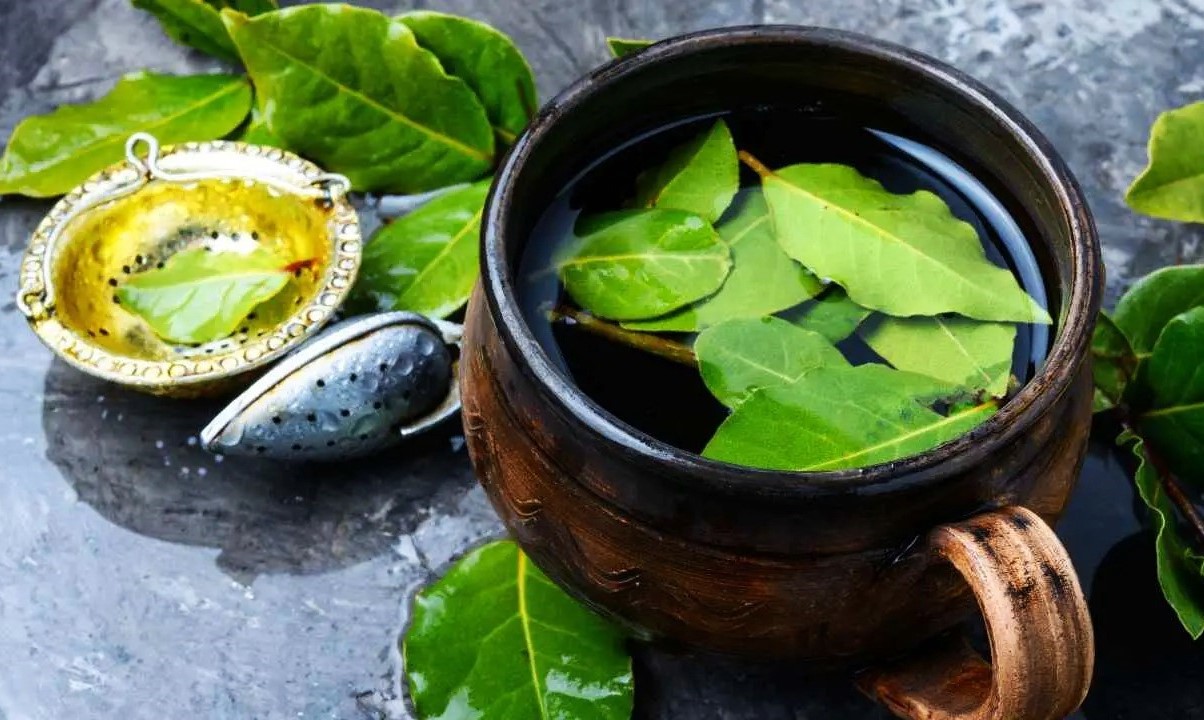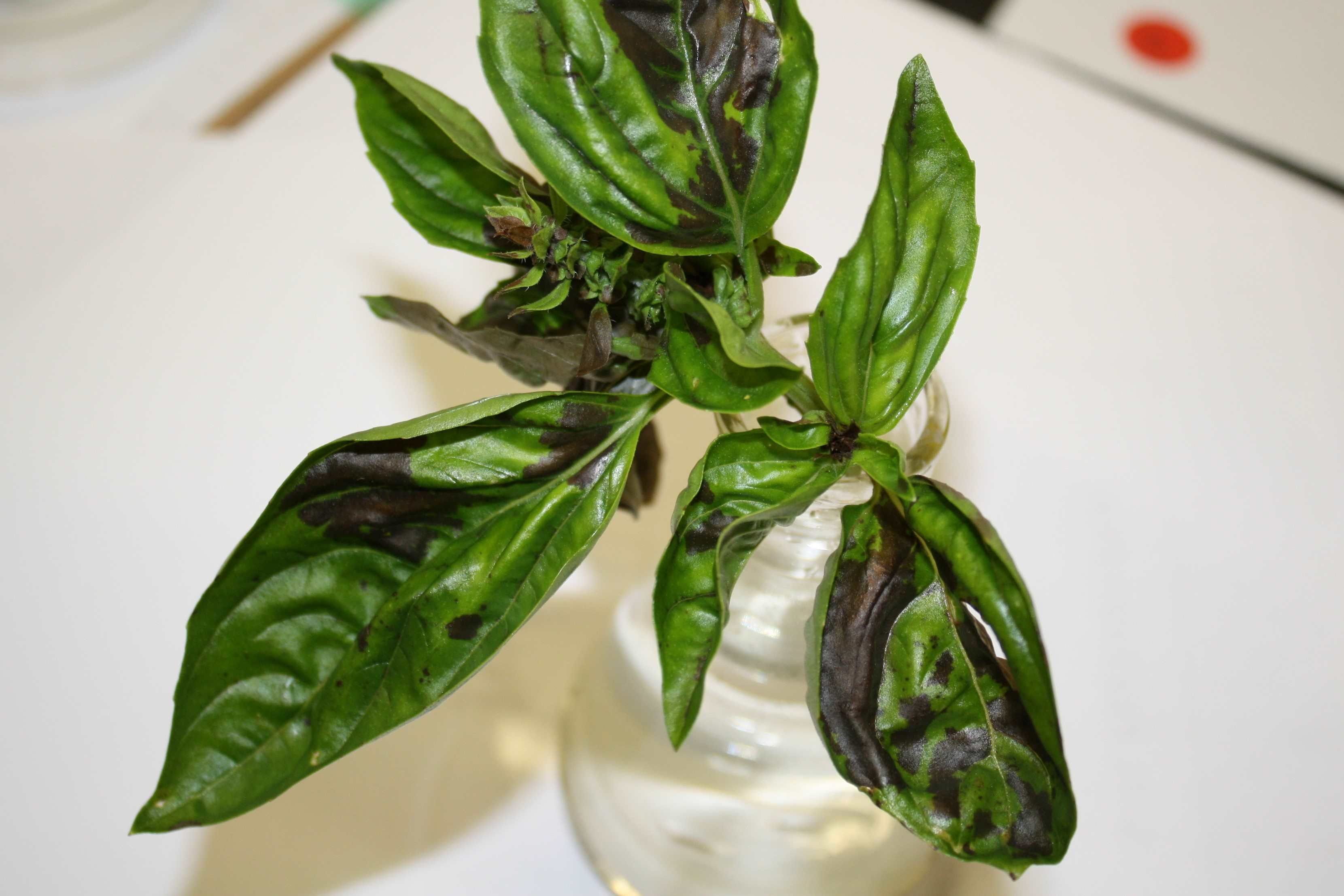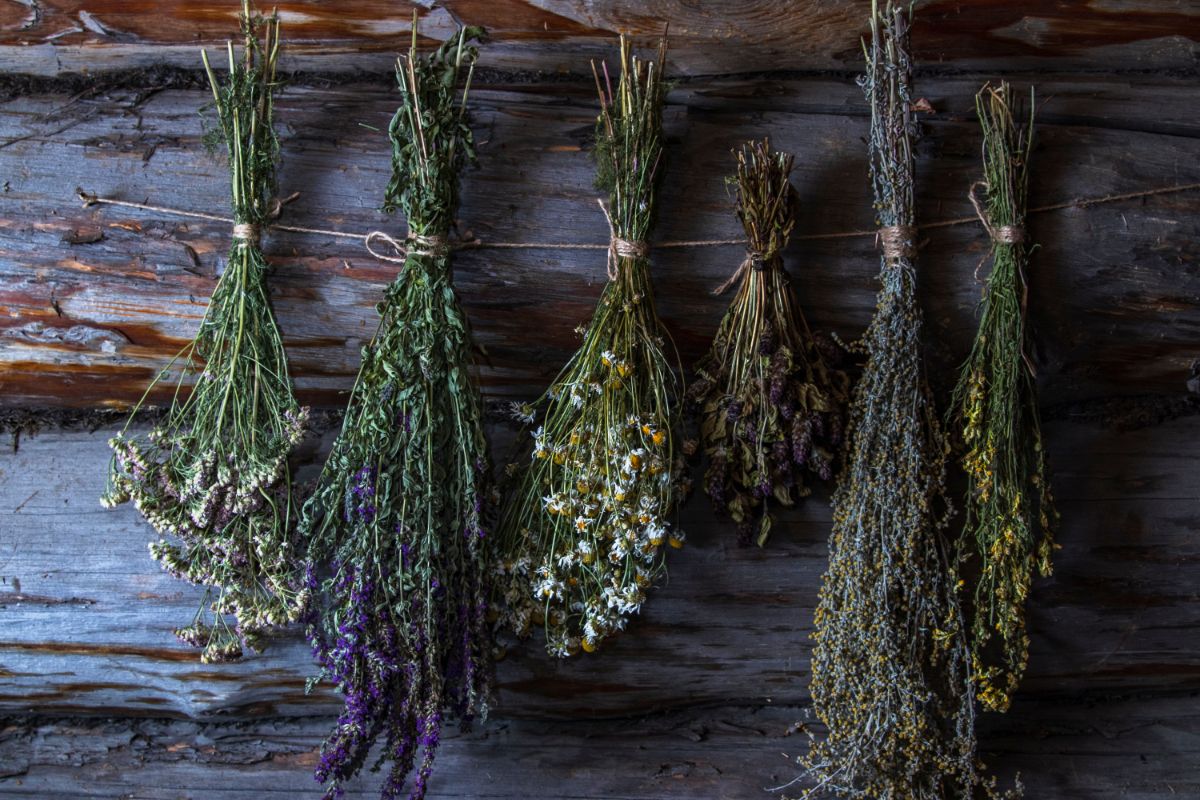Home>Food and Cooking>How To Dry Basil
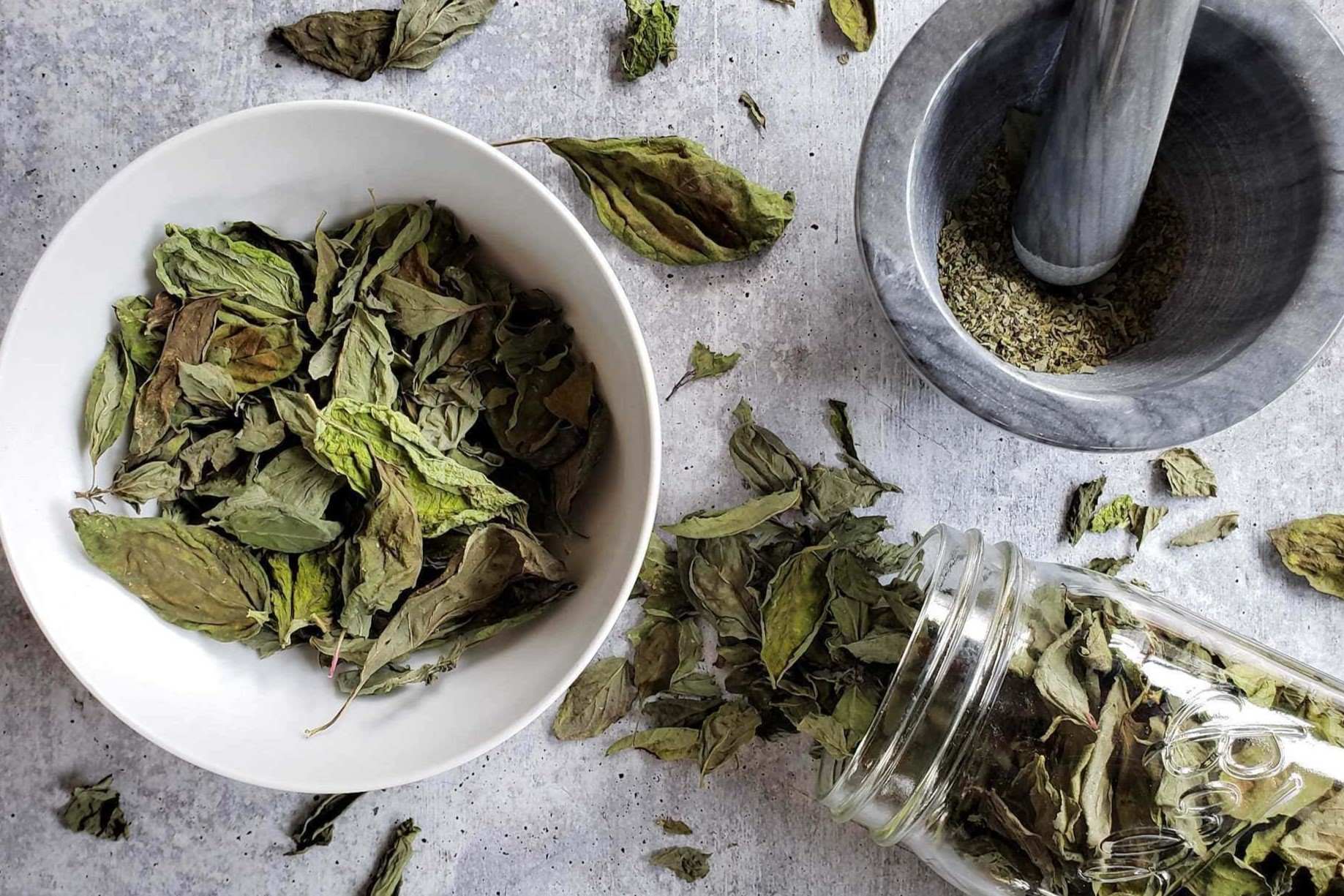

Food and Cooking
How To Dry Basil
Modified: March 2, 2024
Learn how to dry basil at home with our easy step-by-step guide. Preserve the fresh flavor of this versatile herb for your favorite food and cooking recipes.
(Many of the links in this article redirect to a specific reviewed product. Your purchase of these products through affiliate links helps to generate commission for Noodls.com, at no extra cost. Learn more)
Table of Contents
Introduction
Drying basil is a wonderful way to preserve this aromatic herb, ensuring that its delightful flavor and fragrance can be enjoyed long after the growing season has ended. Whether you have an abundant basil harvest from your garden or you simply want to savor the essence of this herb throughout the year, learning how to dry basil is a valuable skill for any cooking enthusiast.
By drying basil, you can capture its essence at its peak, preserving its vibrant green color and intense flavor. This process allows you to create a supply of dried basil that can be used in a wide range of culinary creations, from homemade pasta sauces and soups to herb-infused oils and vinegars. Additionally, dried basil can be a convenient and cost-effective alternative to fresh basil, especially during the winter months when fresh herbs may be less readily available.
Understanding the various methods of drying basil, such as air drying and oven drying, empowers you to choose the approach that best suits your preferences and resources. Furthermore, knowing how to properly store dried basil ensures that it retains its potency and flavor for an extended period, allowing you to enjoy the essence of summer's bounty throughout the year.
In this comprehensive guide, we will explore the art of drying basil, from selecting the finest basil leaves to mastering the techniques for air drying and oven drying. Additionally, we will delve into the versatile applications of dried basil in cooking and provide insights into the best practices for storing this precious herb. Whether you are a seasoned home cook or a novice in the kitchen, this guide will equip you with the knowledge and skills to harness the essence of basil in its dried form, enriching your culinary endeavors with its distinctive aroma and taste.
Read more: How To Dry Rose Petals
Choosing the Right Basil
When it comes to drying basil, selecting the right variety of basil is crucial to achieving the best results. While there are numerous types of basil, each with its own unique flavor profile and characteristics, not all varieties are equally well-suited for drying. The most commonly used basil for drying is Sweet Basil, also known as Genovese Basil. This variety is renowned for its intense aroma and robust flavor, making it a popular choice for culinary applications.
When choosing basil for drying, look for plants that are healthy and vibrant, with lush, aromatic leaves. Opt for basil plants that have not yet flowered, as the leaves of flowering basil can become bitter and lose some of their essential oils, which are responsible for their distinctive flavor and fragrance. Additionally, select basil leaves that are free from blemishes, discoloration, or signs of pest damage, as these imperfections can detract from the quality of the dried herb.
While Sweet Basil is the preferred choice for drying, other basil varieties, such as Thai Basil and Lemon Basil, can also be dried and used to add unique flavor dimensions to culinary creations. Thai Basil, with its subtle anise-like undertones, can infuse dishes with a hint of licorice-like sweetness, while Lemon Basil imparts a citrusy, lemony essence that can elevate both savory and sweet dishes.
Whether you are growing basil in your garden or purchasing it from a local market, ensure that the basil leaves are plump, fragrant, and free from any signs of wilting or decay. By choosing the finest basil leaves for drying, you can capture the essence of this beloved herb at its peak, preserving its vibrant color and intense flavor to enhance your culinary endeavors throughout the year.
Harvesting Basil
Harvesting basil at the right time is essential to ensure that the leaves possess maximum flavor and aroma for the drying process. The ideal time to harvest basil is before the plant begins to flower. As the basil plant matures and prepares to flower, its energy shifts from producing flavorful leaves to developing flowers and seeds. Therefore, it is best to harvest basil when it is in its prime, typically before it reaches the flowering stage.
To harvest basil, begin by selecting mature, healthy leaves from the plant. Using clean, sharp scissors or pruning shears, snip the basil stems just above a pair of leaves. This method encourages the plant to branch out and continue producing an abundant supply of fresh leaves. It is important to avoid cutting the stems too close to the base of the plant, as this can impede the growth and vitality of the basil.
When harvesting basil, it is advisable to do so in the morning, after the dew has dried but before the sun's heat has intensified. During this time, the basil leaves are at their peak flavor and fragrance, as the essential oils that contribute to their distinctive taste and aroma are most concentrated. By harvesting basil in the morning, you can capture the essence of the herb when it is at its most flavorful, ensuring that the dried basil retains its potent and aromatic qualities.
As you gather the basil leaves, inspect them for any signs of damage, discoloration, or pest infestation. Select only the finest, unblemished leaves for drying, as these will yield the highest quality dried basil. It is important to handle the basil leaves with care to prevent bruising or crushing, as this can diminish their flavor and aroma.
By harvesting basil at the peak of its flavor and vitality, you can lay the foundation for creating a supply of dried basil that encapsulates the essence of this beloved herb. The harvested basil leaves are now ready to undergo the drying process, where their vibrant green color and intense flavor will be preserved, allowing you to savor the essence of basil in its dried form throughout the year.
Air Drying Basil
Air drying is a traditional and straightforward method for preserving basil, allowing the leaves to gradually dehydrate while retaining their essential oils and flavor. This gentle drying process results in dried basil that maintains its vibrant green color and robust aroma, making it a versatile and valuable addition to your culinary repertoire.
To air dry basil, begin by gathering the harvested basil stems into small bundles, typically consisting of 5-10 stems each. Secure the bundles with twine or rubber bands, leaving a length of string for hanging. It is important to avoid tying the bundles too tightly, as this can impede air circulation and hinder the drying process.
Next, find a well-ventilated, warm, and dry location to hang the basil bundles. Ideally, this space should be out of direct sunlight, as prolonged exposure to sunlight can cause the basil leaves to lose their vibrant color and essential oils. A well-ventilated area allows for proper air circulation, facilitating the gradual drying of the basil leaves.
Hang the basil bundles upside down from a hook, clothesline, or drying rack, ensuring that they are suspended in a manner that allows air to circulate freely around the leaves. As the basil leaves dry, they will shrink and become brittle, indicating that the drying process is nearing completion.
The air drying process typically takes 1-2 weeks, depending on environmental conditions such as humidity and temperature. It is important to periodically check the basil bundles during the drying period, ensuring that the leaves are drying evenly and are free from mold or mildew.
Once the basil leaves are thoroughly dried and crumble easily between your fingers, they are ready to be removed from the stems. Gently strip the dried leaves from the stems, taking care to discard any discolored or damaged leaves. Store the dried basil leaves in an airtight container, such as a glass jar or resealable plastic bag, away from direct sunlight and heat.
Air-dried basil retains its intense flavor and aroma, making it a valuable ingredient in a wide range of culinary creations. From infusing oils and vinegars to seasoning soups, stews, and sauces, dried basil adds a delightful depth of flavor to dishes, allowing you to savor the essence of this beloved herb throughout the year.
By mastering the art of air drying basil, you can harness the vibrant essence of this aromatic herb in its dried form, enriching your culinary endeavors with its distinctive flavor and fragrance. Whether you are a seasoned home cook or a novice in the kitchen, air drying basil empowers you to preserve the essence of summer's bounty, ensuring that the delightful flavor of basil can be enjoyed long after the growing season has ended.
Oven Drying Basil
Oven drying basil is a convenient and efficient method for preserving this aromatic herb, offering a quicker alternative to air drying while yielding equally flavorful results. This approach allows you to expedite the drying process, making it especially advantageous when time is of the essence or when environmental conditions are not conducive to air drying. By harnessing the gentle heat of the oven, you can efficiently dehydrate basil leaves while retaining their vibrant color and essential oils, ensuring that the dried basil maintains its potent flavor and aroma.
To oven dry basil, begin by preheating your oven to its lowest setting, typically around 170°F (75°C). While it is important to use a low temperature to prevent the basil leaves from scorching or losing their essential oils, some ovens may not have a setting as low as 170°F. In such cases, you can slightly increase the temperature, but it is crucial to monitor the basil closely to prevent over-drying.
Next, prepare the basil leaves by gently washing and thoroughly drying them. Remove the leaves from the stems, discarding any damaged or discolored leaves. Place the clean, dry basil leaves in a single layer on a baking sheet lined with parchment paper. It is important to ensure that the basil leaves are not overcrowded on the baking sheet, as this can impede the airflow and hinder the drying process.
Once the oven is preheated and the basil leaves are arranged on the baking sheet, place the sheet in the oven and prop the oven door open slightly to allow moisture to escape. This slight opening facilitates air circulation and helps prevent the basil leaves from becoming limp instead of drying properly.
Allow the basil leaves to dry in the oven for approximately 1-2 hours, checking them periodically to ensure that they are drying evenly and not becoming overly crisp. The leaves are ready when they are thoroughly dried and crumble easily between your fingers.
Once the basil leaves are dried to perfection, remove them from the oven and allow them to cool completely. Gently crumble the dried leaves into a clean, dry bowl, discarding any pieces that appear discolored or have retained moisture. Store the dried basil in an airtight container, such as a glass jar or resealable plastic bag, away from direct sunlight and heat.
Oven-dried basil offers a convenient and efficient way to preserve the essence of this beloved herb, ensuring that its vibrant flavor and aroma can be enjoyed throughout the year. From seasoning roasted vegetables and grilled meats to enhancing the flavor of homemade bread and pizza, dried basil adds a delightful depth of flavor to a wide range of dishes, enriching your culinary creations with the essence of this cherished herb. Mastering the art of oven drying basil empowers you to harness the vibrant essence of this aromatic herb in its dried form, enhancing your culinary endeavors with its distinctive flavor and fragrance.
Read more: How To Harvest Basil
Using Dried Basil
Dried basil is a versatile and invaluable ingredient that can elevate a wide array of culinary creations with its distinctive flavor and aroma. Whether you have air-dried or oven-dried basil, the resulting dried leaves can be used in numerous ways to infuse dishes with the essence of this beloved herb.
One of the most common uses of dried basil is in seasoning and flavoring savory dishes. From pasta sauces and soups to marinades and dressings, dried basil adds a delightful depth of flavor, infusing the dish with its robust and aromatic essence. Its versatility extends to enhancing the flavor of roasted vegetables, grilled meats, and seafood, offering a convenient way to incorporate the essence of basil into a diverse range of savory creations.
In addition to savory dishes, dried basil can also be used to impart its distinctive flavor to baked goods. When added to bread dough or pizza crust, dried basil infuses the baked goods with a subtle herbaceous note, enhancing their flavor and aroma. Furthermore, incorporating dried basil into homemade crackers, biscuits, and savory pastries can elevate these treats with a delightful hint of herbal complexity, adding a unique dimension to their taste profile.
Beyond savory and baked dishes, dried basil can be utilized to infuse oils, vinegars, and condiments with its aromatic essence. By combining dried basil with high-quality olive oil or vinegar, you can create flavorful infusions that can be used to dress salads, drizzle over grilled vegetables, or enhance the flavor of marinades and dips. The resulting infused oils and vinegars capture the essence of basil, offering a convenient way to incorporate its distinctive flavor into a variety of culinary applications.
Moreover, dried basil can be a valuable addition to homemade spice blends and seasoning mixes, contributing its vibrant flavor to create well-balanced and aromatic combinations. Whether used in a classic Italian seasoning blend or as part of a custom herb and spice mix, dried basil enriches the flavor profile of the blend, adding a layer of complexity and depth to dishes when used as a seasoning.
In the realm of culinary creativity, dried basil can be a valuable ally, offering a convenient and accessible way to infuse dishes with the essence of this beloved herb. By harnessing the versatility of dried basil, you can enrich your culinary repertoire with its distinctive flavor and aroma, ensuring that the essence of basil can be enjoyed in a myriad of culinary creations throughout the year.
Storing Dried Basil
Proper storage is essential to maintain the quality and potency of dried basil, ensuring that it retains its vibrant flavor and aroma for an extended period. Whether you have air-dried or oven-dried basil, taking the necessary steps to store it correctly will preserve its essence, allowing you to savor the delightful flavor of basil throughout the year.
After the basil leaves have been thoroughly dried, it is crucial to store them in a manner that protects them from moisture, light, and heat, which can compromise their quality. The ideal storage container for dried basil is an airtight vessel, such as a glass jar with a tight-fitting lid or a resealable plastic bag. These containers shield the dried basil from exposure to air and moisture, safeguarding its flavor and aroma.
When transferring the dried basil to the storage container, ensure that it is completely cool to prevent condensation from forming inside the container. Any residual moisture can diminish the quality of the dried basil, potentially leading to mold or spoilage. Additionally, it is advisable to label the storage container with the date of drying, allowing you to track the freshness of the dried basil and maintain a rotation system for optimal flavor.
To further protect the dried basil from degradation, store the container in a cool, dark, and dry location, such as a pantry or cupboard. Exposure to light and heat can cause the dried basil to lose its vibrant color and essential oils, diminishing its flavor and aromatic qualities. By storing the dried basil in a cool, dark environment, you can preserve its potency and ensure that it remains a valuable ingredient in your culinary endeavors.
It is important to periodically check the stored dried basil for any signs of moisture, discoloration, or loss of aroma. If any of these indicators are present, it may be necessary to replace the dried basil to maintain the quality of your culinary creations. By remaining vigilant in monitoring the stored dried basil, you can ensure that it continues to enrich your dishes with its delightful flavor and fragrance.
By following these guidelines for storing dried basil, you can safeguard its vibrant flavor and aroma, allowing you to enjoy the essence of this beloved herb throughout the year. Whether used to season savory dishes, infuse oils and vinegars, or enhance baked goods, properly stored dried basil remains a valuable ally in the kitchen, enriching your culinary creations with its distinctive essence.



